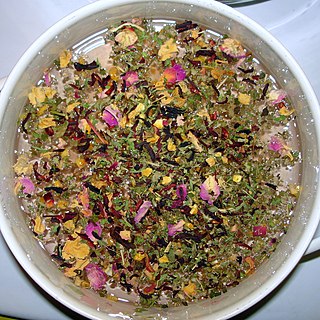
Herbal teas, also known as herbal infusions and less commonly called tisanes, are beverages made from the infusion or decoction of herbs, spices, or other plant material in hot water; they do not usually contain any true tea. Often herb tea, or the plain term tea, is used as a reference to all sorts of herbal teas. Many herbs used in teas/tisanes are also used in herbal medicine and in folk medicine. Some herbal blends contain true tea.
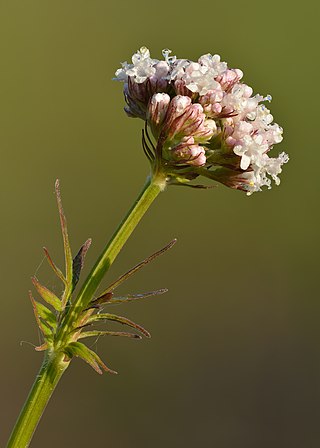
Valerian is a perennial flowering plant native to Europe and Asia. In the summer when the mature plant may have a height of 1.5 metres, it bears sweetly scented pink or white flowers that attract many fly species, especially hoverflies of the genus Eristalis. It is consumed as food by the larvae of some Lepidoptera species, including the grey pug.

Urtica is a genus of flowering plants in the family Urticaceae. Many species have stinging hairs and may be called nettles or stinging nettles. The generic name Urtica derives from the Latin for 'sting'.
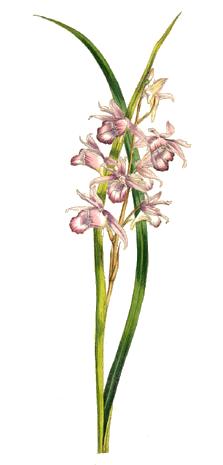
Phaius, commonly known as swamp orchids or in Chinese as 鶴頂蘭屬/鹤顶兰属 , is a genus of forty-five species of flowering plants in the orchid family, Orchidaceae. They are evergreen, terrestrial herbs which form clumps with crowded, sometimes stem-like pseudobulbs, large, pleated leaves and relatively large, often colourful flowers. Species in this genus are found in the tropical parts of Africa, Asia, Southeast Asia, New Guinea, Australia, and various islands of the Pacific and Indian Oceans. One species is also naturalized in Hawaii, Florida, and the Caribbean.

Anemone hepatica, the common hepatica, liverwort, liverleaf, kidneywort, or pennywort, is a species of flowering plant in the buttercup family Ranunculaceae, native to woodland in temperate regions of the Northern Hemisphere. This herbaceous perennial grows from a rhizome.

Valerenic acid is a sesquiterpenoid constituent of the essential oil of the valerian plant.

Schima is a genus of evergreen trees belonging to the tea family, Theaceae.

Didymoplexis, commonly known as crystal orchids or as 双唇兰属 , is a genus of terrestrial leafless orchids in the family Orchidaceae, about twenty species of which have been described. Orchids in this genus have swollen, fleshy rhizomes and thin, pale, upright fleshy flowering stems with resupinate, bell-shaped white or pale yellowish brown flowers. They are native to Africa, Madagascar, Southeast Asia, Australia and various islands of the Pacific.

Valeriana celtica is a species of plant in the family Caprifoliaceae. It is also known as Alpine valerian and valerian spikenard. It is endemic to the Eastern Alps and to the Graian and Pennine Alps. It grows as a perennial herb 5 to 15 cm (2.0–5.9 in) tall. Along with Valeriana saxatilis and Valeriana elongata, it forms a clade of dioecious plants. Until the 1930s, it was extensively harvested for export to Asia for use in perfumes. The root has been used as a folk remedy as a nerve tonic.
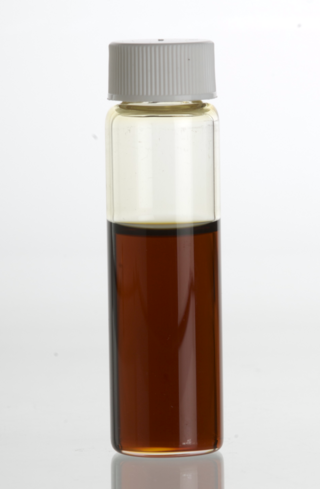
Spikenard, also called nard, nardin, and muskroot, is a class of aromatic amber-colored essential oil derived from Nardostachys jatamansi, a flowering plant in the honeysuckle family which grows in the Himalayas of Nepal, China, and India. The oil has been used over centuries as a perfume, a traditional medicine, or in religious ceremonies across a wide territory from India to Europe. Historically, the name nard has also referred to essential oils derived from other species including the closely related valerian genus, as well as Spanish lavender; these cheaper, more common plants have been used in perfume-making, and sometimes to adulterate true spikenard.

Chandra Prakash Kala is an Indian ecologist and professor. His research interests include alpine ecology, conservation biology, indigenous knowledge systems, ethnobotany and medicinal aromatic plants. He is an assistant professor in the faculty area of Ecosystem and Environment Management at the Indian Institute of Forest Management.

Nardostachys is a genus of flowering plant in the honeysuckle family (Caprifoliaceae). Nardostachys jatamansi is the sole species in genus.
Diospyros venosa is a tree in the family Ebenaceae. It is native to Southeast Asia, from the Maluku Islands to Myanmar. It provides raw material for handicrafts, traditional medicine and fuel.
Wallichii, a specific epithet honouring Danish botanist Nathaniel Wallich, may refer to:
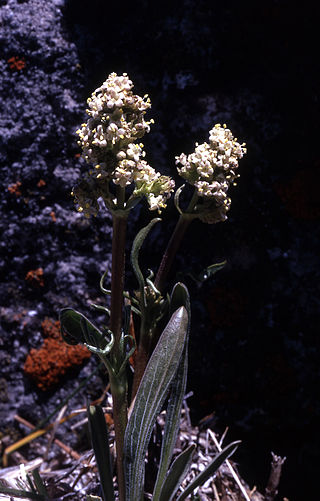
Valeriana edulis, the tobacco root or edible valerian, a species of flowering plant in the family Caprifoliaceae, is a dioecious perennial herb native to western and central North America. Despite its common name, tobacco root is not closely related to tobacco, but is instead more closely related to elderberry, honeysuckle, and teasel.

Solidago lepida, the western Canada goldenrod or western goldenrod, is a North American plant species in the genus Solidago of the family Asteraceae. It is widespread across much of Canada, the western United States, and northern Mexico.

Perilla is a genus consisting of one major Asiatic crop species Perilla frutescens and a few wild species in nature belonging to the mint family, Lamiaceae. The genus encompasses several distinct varieties of Asian herb, seed, and vegetable crop, including P. frutescens (deulkkae) and P. frutescens var. crispa (shiso). The genus name Perilla is also a frequently employed common name ("perilla"), applicable to all varieties. Perilla varieties are cross-fertile and intra-specific hybridization occurs naturally. Some varieties are considered invasive.















